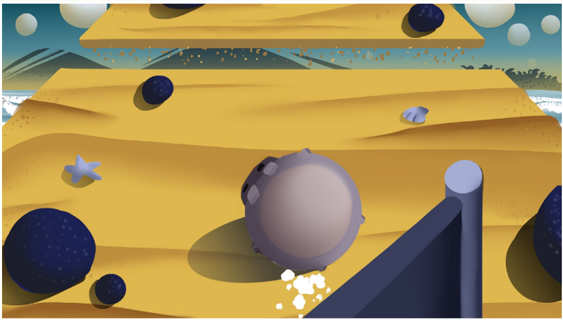Several ideas came to us based on the theme and the constraints. We didn't want to stay too long on the brainstorming phase to have time to do and wanted a project scope that fit the limited time.
The constraint requiring asymmetrical mechanics made us directly see a game playable with 2 players, to easily create an asymmetry. It is also possible to play alone, but this requires 2 phases of play. While we also had to make this game a turn-based game, it was interesting to look at the idea of a 2-player game with each player taking turns.
We started with a game whose principle is a confrontation between a builder and a runner.
The "builder" player will create a course for the "runner" by laying down 1 by 1 the tiles, among 3 tiles proposed in a procedural way. In the set of tiles, there is always 1 tile to the left, 1 tile to the right and 1 going straight. The objective of this player is to create the hardest course so that his opponent takes the longest time to get there.
The "runner" player will have to advance through the course and complete it in the least amount of time possible. The player moves a hippo ball that can jump, to avoid the obstacles in its path.




